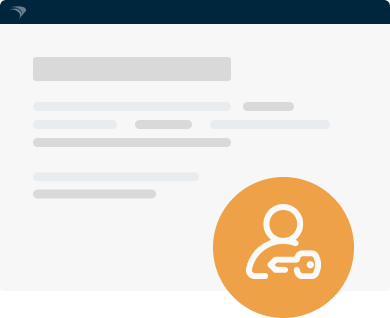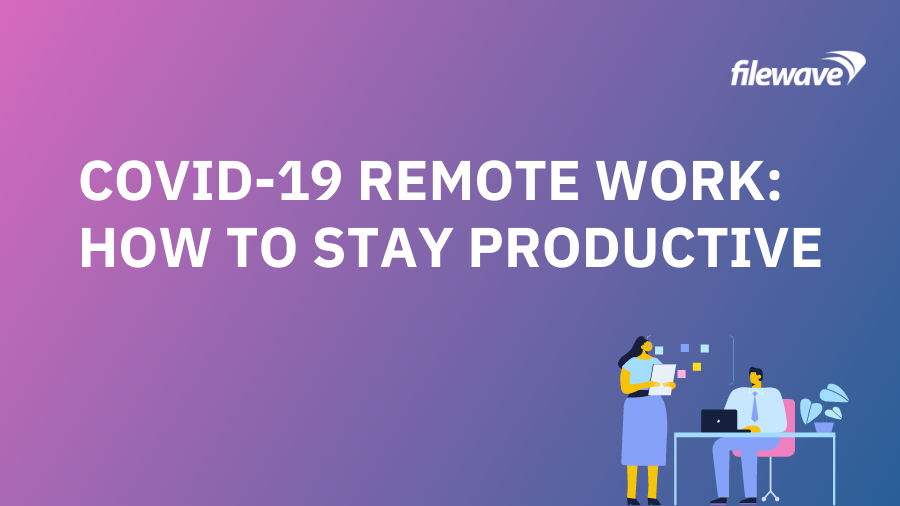Save time and empower employees with these IT management best practices designed to support users and devices across a distributed organization or for remote work.
Through acquisitions and business strategy, many organizations end up distributed across multiple locations. This distribution may be local, to the State or domestic level, or may span the Globe. In light of COVID-19, many organizations have had to rapidly adopt distributed practices to support remote work. For these distributed and remote enterprises, IT teams are challenged to manage and scale the business with control. In this post, we will explore how to build a solid foundation of management capabilities that supports security and end user productivity across the entire organization.
The IT Challenges of Distributed Enterprises
Distributed enterprises face unique IT challenges. With independent locations, there are often difficult choices to make about IT structure – particularly during high growth periods. The need to rapidly onboard new employees and integrate complex IT structures post-acquisition often lead to gaps in visibility – which leads to risk.
Common challenges distributed enterprises face include:
- Decentralized purchasing of devices and software by local organizations, departments, or individuals
- Technical and compliance challenges during mergers and acquisitions, prompting the need to integrate or replace technology and to secure data and devices post-merger
- Multiple devices or operating systems, managed manually or by single point solutions and/or separate IT teams
- Identifying and securing devices connected to the network to secure against unauthorized access
- Providing a consistent experience for employees across the organization
- Configuring and deploying new devices
- Enforcing company standards on all devices
- Managing device, software, and patch deployment across distributed or highly unreliable networks
- The difficulty of providing remote support
Many organizations choose to centralize the management of network infrastructure and the device lifecycle in order to manage costs, enforce standards, and support compliance. As part of this, enterprises are looking to unified endpoint management to knock down the silos associated with managing different devices and operating systems. In larger organizations, this also means integrating siloed IT teams. We see this as an opportunity to free up more time for proactive projects and business agility.
Distributed enterprises can improve their IT management by applying the following best practices.
Optimize Distributed Deployments
The first step in device management is on-boarding: the process of enrolling, provisioning, and configuring or imaging client devices. This may seem an impossible task for a centralized IT department for a distributed organization, but with tools such as FileWave, the “unboxing” of a device is unrelated to the on-boarding process.
Zero-touch deployment programs such as Apple DEP are meant to provide organizations with a way to deploy and configure Apple devices to your organization’s management solution without the need to touch them. However, deploying new devices involves more than just the base operating system. Leveraging FileWave, you can build on Apple DEP and other zero-touch programs, supplying new users or devices with the specific applications, configurations, restrictions, and personalizations specific to the individual, user group, or location.
The end user can unbox the device anywhere in the world and it will automatically ready itself with the right applications and configurations by tapping into a local FileWave Booster rather than reaching across the network. FileWave Boosters are the secret to optimizing distributed deployments.
Matthews International centrally manages the devices for more than 11,000 people in 25 countries with the help of FileWave. Deployments and configurations are standardized across business lines, to improve compliance and support, with customizations assigned by relationship such as location, device type, or user group. FileWave Booster technology ensures that applications and configurations are installed even on highly distributed networks or connections.
“When we’re passing out a new workstation, it takes 15 minutes,” notes Dan DeRusha, Workstation Automation & Engineering for Matthews International. “A zero-touch workflow would not be possible without FileWave.”
Remote Support: A Game Changer
I think we’ve all seen how frustrating tier 1 support can be when exchanging emails or phone calls with someone who can’t “see” your problem, which is why support traditionally required an on-site technician. There’s the old adage that “you can’t be in more than one place at any given time,” but today that’s no longer true for IT. And that has helped revolutionize support.
Leveraging FileWave’s remote support capabilities, technicians can remotely navigate firewalls and NAT configurations to view and operate remote computers to deploy configurations, files, and patches to provide remote support. Aside from the immediate impact this has on first-call resolution, this same remote capability allows technicians to provide just-in-trine user training right on an end user’s screen. This can all be done by any technician in any location – how’s that for optimizing support resources?
At Matthews International, freed from the tasks associated with device deployment and management, local IT personnel work with the global office to test configurations in local environments and to provide cross-business support. With standardizations across the business, local IT personnel can answer support requests anywhere in the organization, helping optimize IT resources on a global scale.
“If you can troubleshoot computers at your location, you can troubleshoot computers in any location in the same part of the business,” notes Dan DeRusha. “We want to promote the kind of environment where techs are helping each other out.”
Empower Employees with Self-Service
Loading all applications onto every device isn’t cost-effective or advised for any organization. However, neither is dealing with endless support requests for new software. The reality is that if employees cannot get the software they need when they need it, they’re likely to install unauthorized software (“Shadow IT”). So, the solution is to give employees a way to help themselves.
FileWave has solved this problem with our Self-Service Kiosk. The kiosk can be stocked with software, documents, or resources that have been vetted and pre-configured by IT. End users can access the kiosk at any time to download what they need – with no need for admin rights or approvals to install software.
Flexible and Scalable for Growth
For distributed enterprises, the need to be organized is even more acute. IT teams need a unified endpoint management platform to deploy, manage, and support devices through their entire lifecycle. During periods of growth, a solid IT foundation will provide the built-in flexibility to help your business scale when it needs to, with security and control built into every step.
FileWave, designed from its inception as a cross-platform tool, has continued to evolve along with the technology market. Using standardized workflows based on Filesets, Smart Groups, and a powerful reporting engine, FileWave enables easier cross-training of IT teams to manage multiple systems. In an era where each individual user’s devices are a multi-platform environment, those users should not have to rely on multiple support tools and technicians to help them be productive.
Learn how FileWave can help make managing IT for distributed enterprise simple. If your organization is new to distributed management due to the COVID-19 outbreak, we’re happy to share our knowledge and familiarity with industry best practices to help support you through these challenges.


